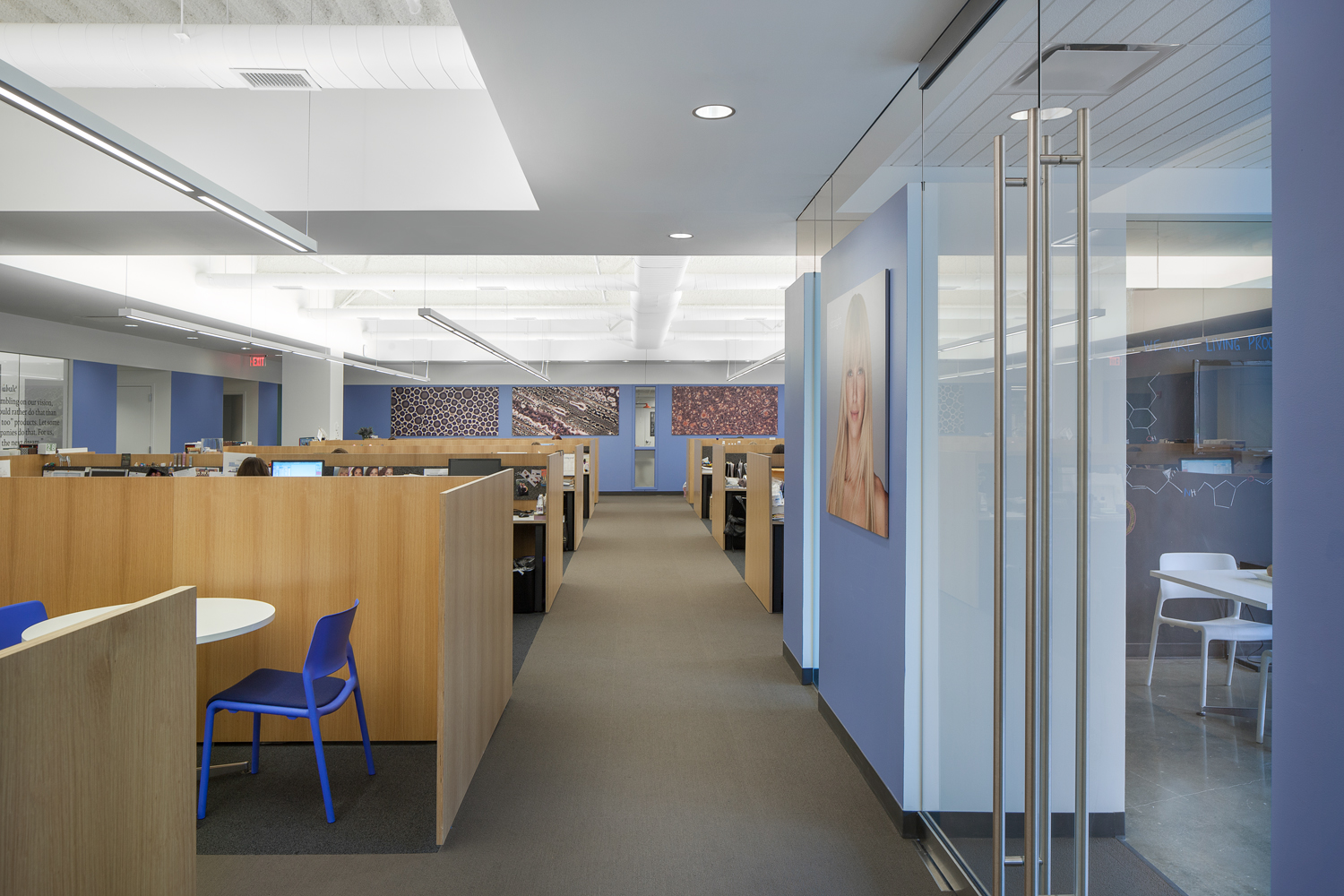Design Moves: Interview with Grace Ray, CEO of Living Proof
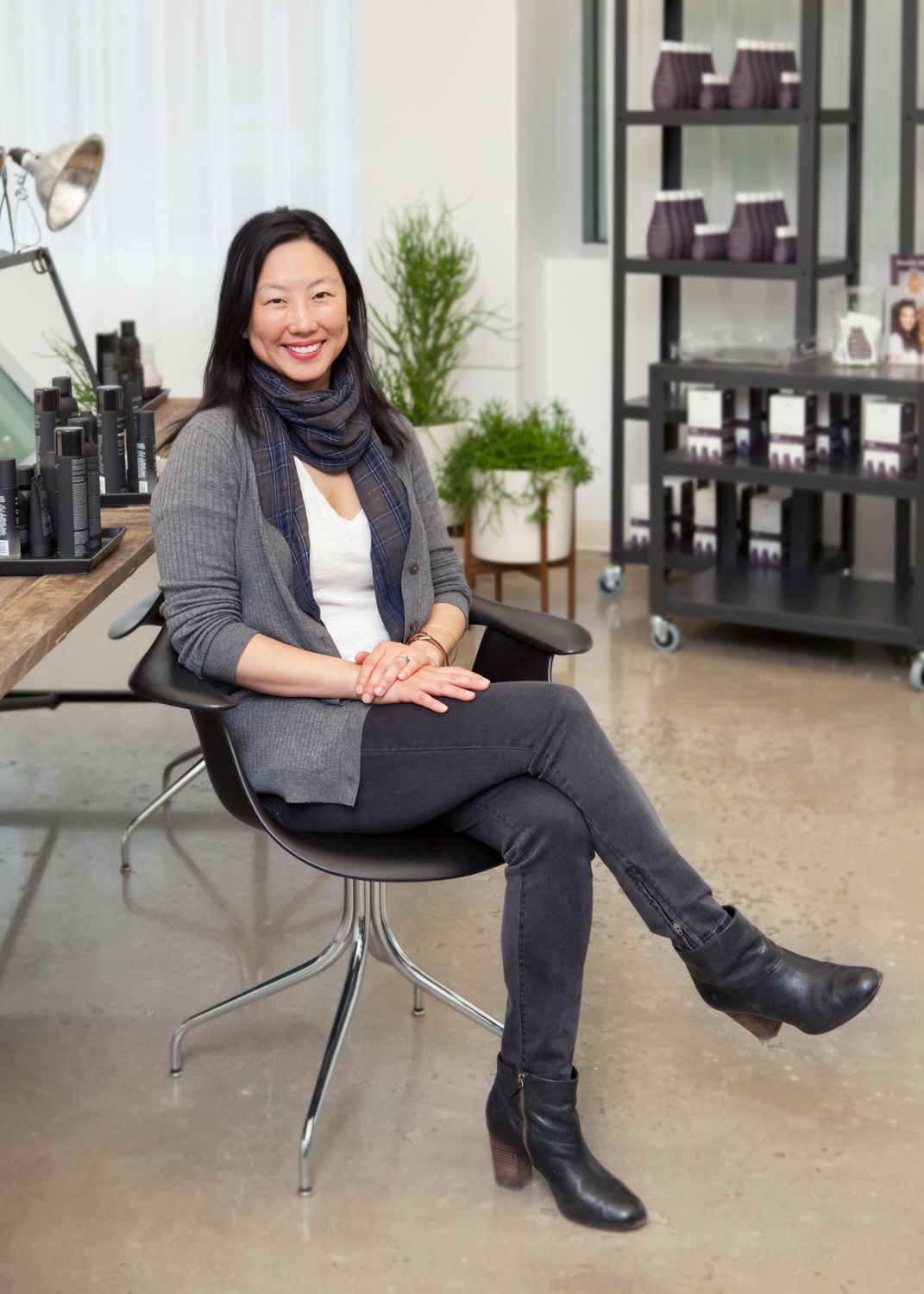
Interview by David Hacin
Hacin worked with Living Proof CEO Grace Ray on both the Living Proof Headquarters and Living Proof Style | Lab. The headquarters includes the Living Proof laboratory where scientists invent, analyze, and patent new molecules that aim to protect hair from harsh environmental factors, such as humidity and dirt. The Living Proof Style | Lab is the company’s first retail initiative and is housed within the Cambridge headquarters. David Hacin sat down with Grace to discuss Living Proof’s company culture, the Test Salon, and her Living Proof must-haves for a stint on a desert island.
DH: We’ve loved working with Living Proof for awhile now and you in particular on the Headquarters, the lab space, and now on the Style | Lab retail space and I wanted to ask you about how these very different functions of the space work together. You said yourself that sometimes you like to come into the retail space just to take a breath of fresh air but what is it about the different kinds of spaces that you have all gathered together in one place that makes Living Proof function a little differently than other companies?
GR: I think it’s such a good reflection of our integrated development process because we, unlike other companies, do everything in one location. So what can happen is an idea can germinate in a meeting and then can get developed and formulated in the lab, then brought over to the test salon to see how it works on hair, then brought into the retail space so that it comes to life. In a way, what we’re able to do is create this crucible of innovation. And we can do everything from conceive an idea to bring it to life much more quickly and much more creatively because we’re able to interact and integrate unlike other companies can. I think it’s great because this suits the way we work and has turned out to be very, very effective for us.
DH: You don’t really see that very often so I think it’s visionary to be thinking about bringing all of those things together in that way. Do you like to work in your office, or do you like to move around? How do you like to use the space?
GR: First of all, I love my workspace. The reason I like it is that I can easily see and sense the pulse of energy in the office which is important. Also, I’m accessible and that’s important. People can just walk right up and speak to me, and that’s really what the whole open workspace is facilitating, but I don’t really have one place I love to work. I like working at my desk when I need to do some contemplative thinking but I love working with the entire team and we have so many different areas to do that. We have
the boardroom, and actually, we use the kitchen a lot and the natural light and high ceilings makes it really creatively inspiring and, well, food is always inspiring.
DH: I know food is a big part of the Living Proof culture.
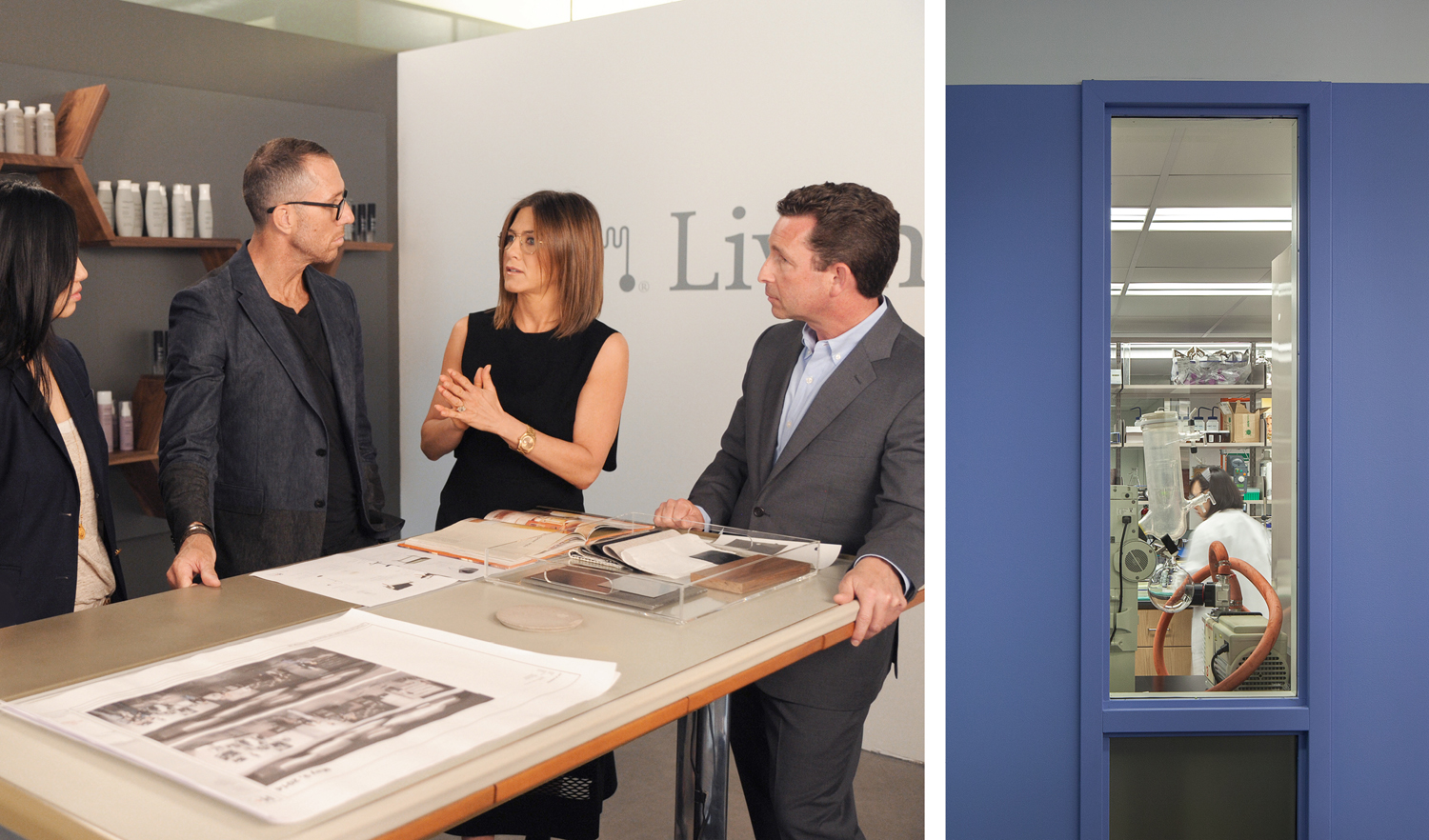
GR: It’s so much a part of our culture! And what’s interesting is that when we’re in meetings in the kitchen, people are coming in and out and we get contributions. People who aren’t normally in the meeting will just chime in with an idea or a point of view and many times that has actually led us to better ideas. So it’s all part of this idea of integrating and mixing groups that don’t normally comingle. With this kind of environment it really creates great ideas.
DH: This idea of accidental engagement is being talked about a lot in workplace design and what you’re describing is how important workplace design can be to a corporate culture. I know that you worked for some big big companies like L’Oreal which presumably are in large office buildings with multiple floors and where it’s probably a lot more difficult to interact between departments. How is this different and what did you learn about workspace there that you brought here?
GR: I think what’s great is that departments that don’t normally work together and personality types that don’t normally mix are put together and the result of that is this disruptive energy and disruptive thinking that takes us off the curve and gives us a different level of creativity. A great example is that we have a professional hair stylist sitting next to a PhD chemist and a brand marketer. Literally they sit in the same workspace and you constantly see that they are talking to each other so when the chemist is tinkering with a formula, the marketer will say, ‘What are you doing?’ and you’ll hear the two of them talk and then the hairstylist will say, ‘Hey I’ve got a client coming in this afternoon. Let’s try it on her hair,” and before you know it, an idea that really wasn’t anything, becomes something.
DH: Part of that was the decision to put those people in the same space. Because you could have all the financial people sitting in one place and the brand people sitting in another but you’ve made this decision to mix people in that way, right?
GR: Yes, we’ve created a link. We have areas where the sharing is really impactful. You have the formulators and the chemists, the marketers, the packaging people, the ones that come up with the ideas…when they’re all together, it’s magic. But there are also reasons why, for instance, in supply chains and operations, they need to sit together because they’re constantly sharing information. So there’s also proximity in a good way among a department so that the communication flow is much more transparent. There is such a benefit to being able to stand up or look to your side and talk to somebody rather than picking up the telephone.
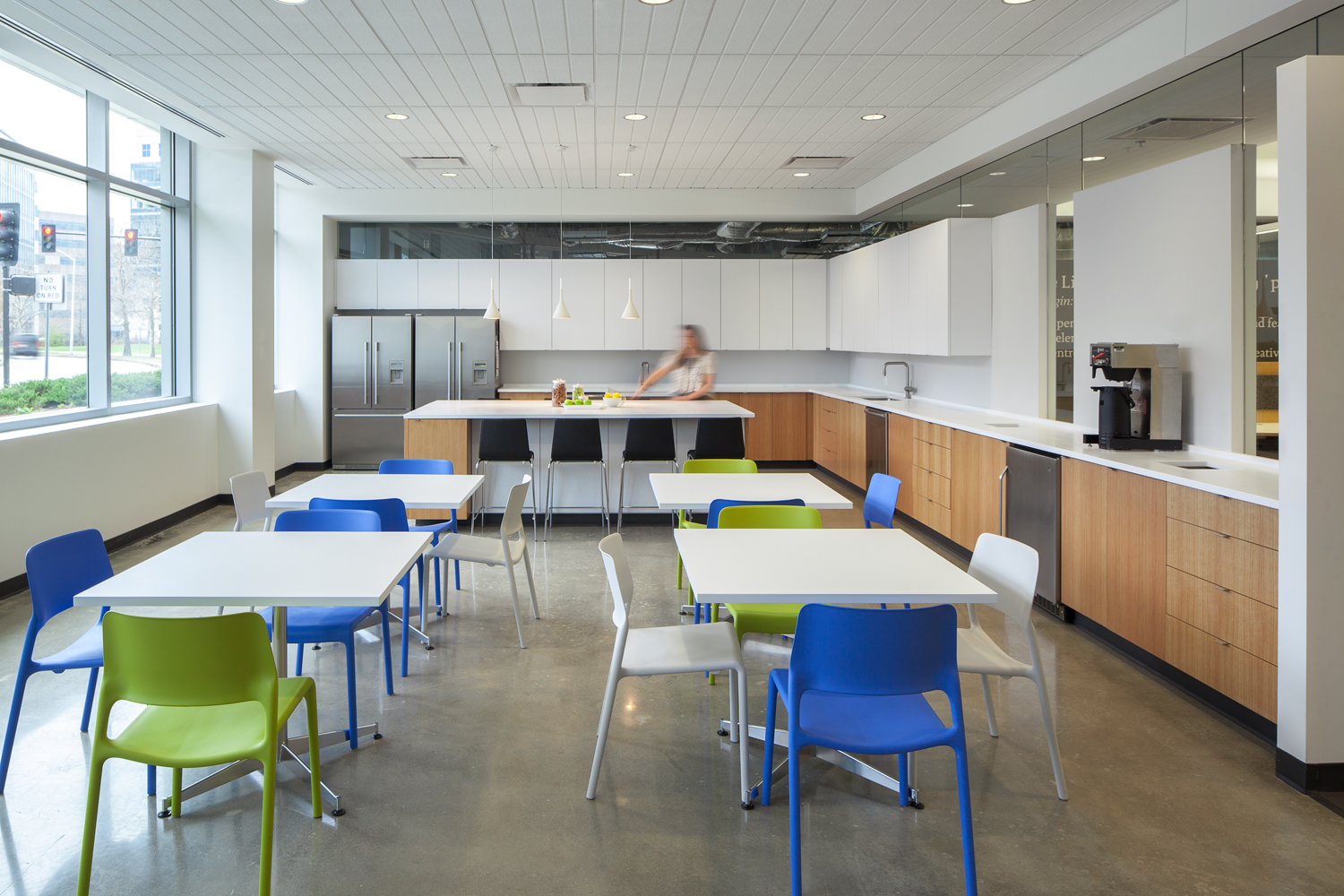
DH: Is there a downside to open office?
GR: I don’t think there is for our office because we have designated private areas as well. I think that the only challenge is when you’re trying to have a private conversation. But it’s a fair trade off because what you get instead is energy. You hear people talking and there’s just a buzz, like when we launched Night Cap. Night Cap is a new product we just launched and it’s doing very well. It’s an overnight hair perfector, so at night before you go to bed, you put it in your hair and you wake up and you’re ready to go – your hair is amazing! What’s so great is that when we came up with the idea, a few of the people that work here took it home and they came back and said, ‘Oh my gosh, this thing was life-changing’ and you could hear them talking about it in the office. I was at my desk and I stood up and I walked over and asked what was going on. I immediately knew that we had something that was really, really special. Instead of having it go through the mill and take months and months to get to me, it was immediate. We said, ‘We’ve got to make this. We’ve got to do it fast.‘ It creates such transparency that it enables everyone to work more effectively.
DH: I’ve been thinking about this. I’m an ex-New Yorker and I spent a lot of time in New York architecture offices, design offices, and other creative companies and I think of the Boston-Cambridge area as nurturing so many innovative smaller companies where everybody knows everybody and there’s kind of an interaction that’s different than you get in a larger city where your other department might be on another floor or in another building or somewhere else, and the city itself is very large and intrusive in a way. You’ve talked about a brand being sort of intimate, and I think if you’re looking for an intimate relationship with your customer, that does happen here, with the Test Salon and the Style | Lab. How does the Test Salon work exactly? Can I make an appointment?
GR: The way the Test Salon works is that we built a huge database of local women who range in hair types and every time we develop a new formulation we call on these women and they get scheduled to come in. It’s a test salon so we do these great half-head tests which are these demos to really understand whether our product is superior to the competition. We’re able to test our new technologies and see how we can improve upon them. And the women absolutely love it because they get a chance to be on the ground floor with us developing the product. They’re giving us their opinions and they’re just so passionate. Right now we’re so oversubscribed because we have so much new product activity going on that we really don’t have time to take appointments.
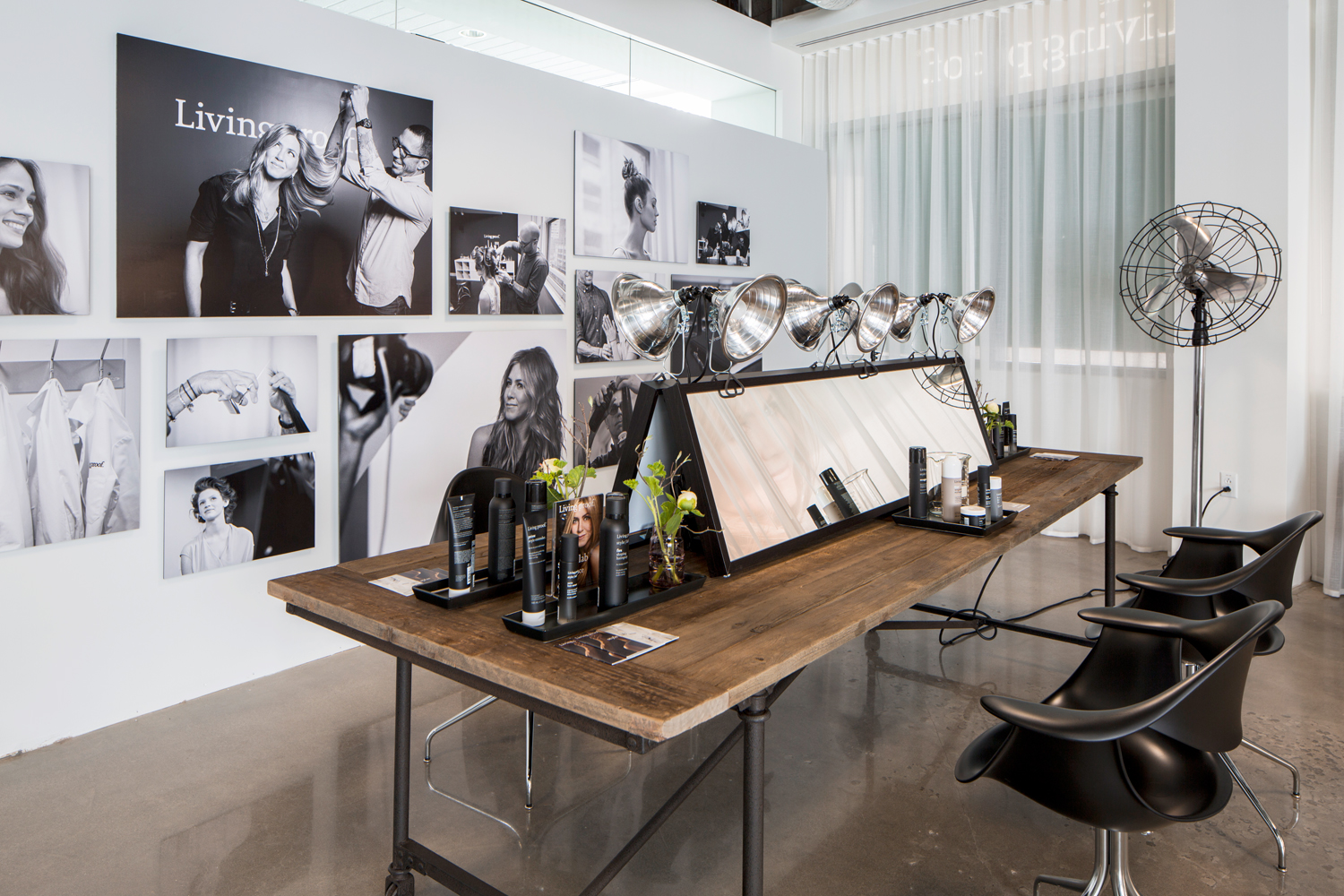
DH: So does a workspace need to reflect the brand?
GR: 100% yes, because a brand takes inspiration from the team and where they work. I think if you don’t have a workspace that’s integrated and connected with the brand vision, you end up having a disconnect. Everything we have here is very cool – the high ceilings, the exposed ductwork, and the modern design. It’s just got a really good creative vibe which I think all cool brands need.
DH: I have to say that it’s really so nice to work for a company when you really believe in their brand and their product. I really do. We were curious about the retail conception itself, and the brand and packaging which is so beautiful. With all of your experience in the beauty industry, how important is packaging design in terms of the brand. If you’ve got beautiful packaging but the product is no good it doesn’t really matter, but how much of an influence does the packaging have on the overall success of a beauty company?
GR: I think packaging absolutely influences the brand because it’s the outward appearance and it’s also the outward user experience, the ergonomic design, the feel of the weight of it in your hand, the way it functions, the way it opens and closes – all of that is so much part of the consumer experience. Of course, to your point, it doesn’t make up for product performance. You have to have strong product performance or else product packaging only gets you the first purchase, and never the repeat purchase.
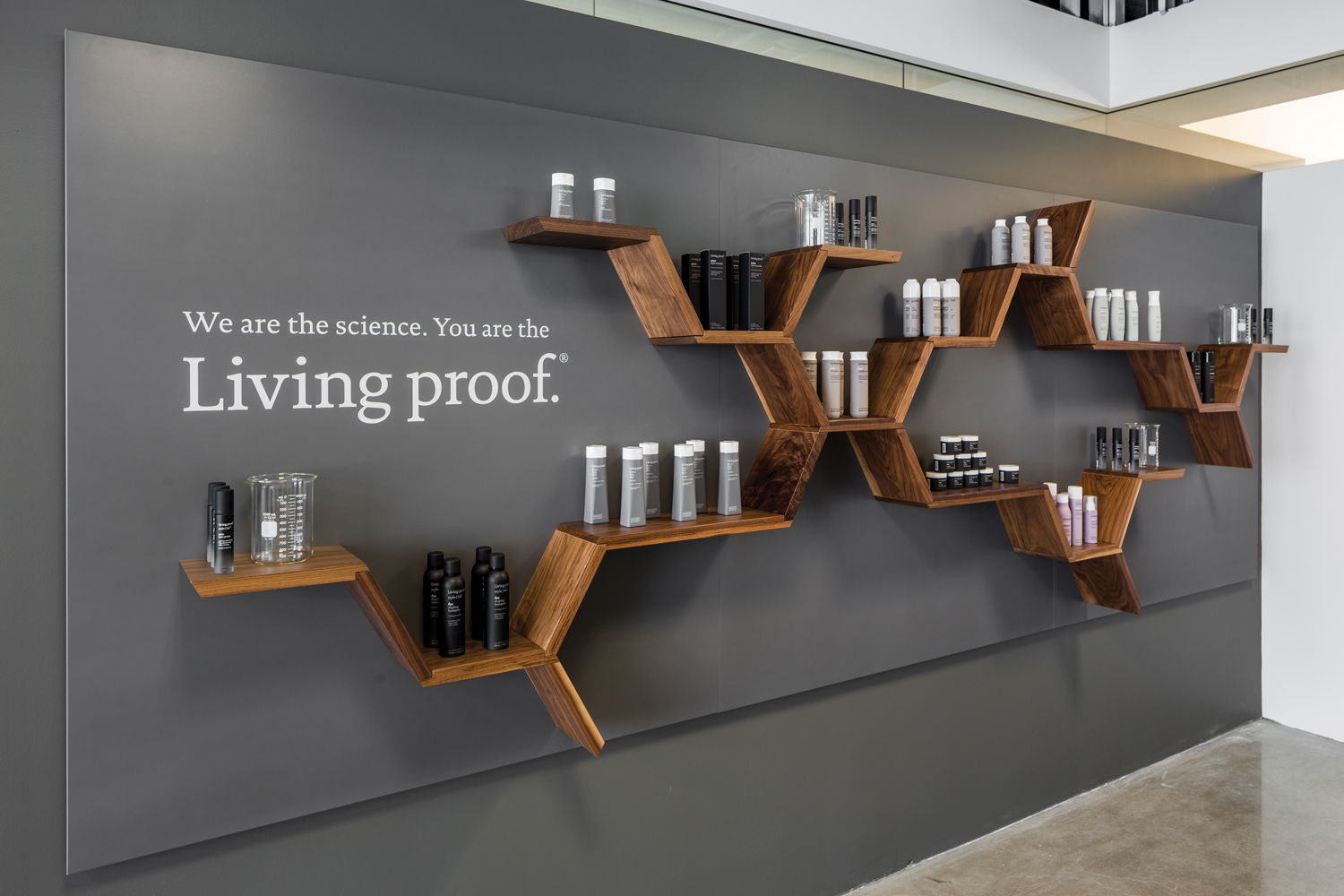
DH: One of the things I think is interesting is that it feels to me like the science and beauty aspect of Living Proof is expressed in the packaging in a really clean way, but it’s not antiseptic. There’s something tactile about it. It’s analogous to space design…it can look great, but if the right pieces and parts aren’t in the right places it’s not going to work. Are you influenced by products and packaging that have nothing to do with your line of work? Do you find that packaging is something that you’re paying particular attention to?
GR: Yes, I am very influenced by design; from fashion, architecture, home furnishings, even automotive. For consumer goods, packaging is the product’s aesthetic design and definitely something all marketers pay attention to. However, if the product does not perform, the packaging ends up becoming irrelevant.
DH: How has working at Living Proof or other beauty companies affected your personal style or vice versa?
GR: I think that when I develop any brand I try not to let my personal tastes get involved because a brand needs to be based on the filter of the brand and shouldn’t be based on individual tastes. Fortunately the Living Proof brand is very much my personal aesthetic so it’s a very good match. I love how clean, simple, and understated it is, that it doesn’t look clinical, or antiseptic, or cold.
DH: What about your style at home as opposed to work. Is home a retreat for you or do you work differently at home?
GR: Home is a retreat for me. It reflects my family’s personal tastes and is a place where we all can comfortably be together, relax and entertain. There are certain places in my home I like to do work; I prefer an open, airy space and natural light when I work from home.
DH: What’s your favorite place in your house?
GR: The kitchen. I love to cook and spend the afternoon in the kitchen with family and friends, just eating and talking. It brings me a lot of happiness.
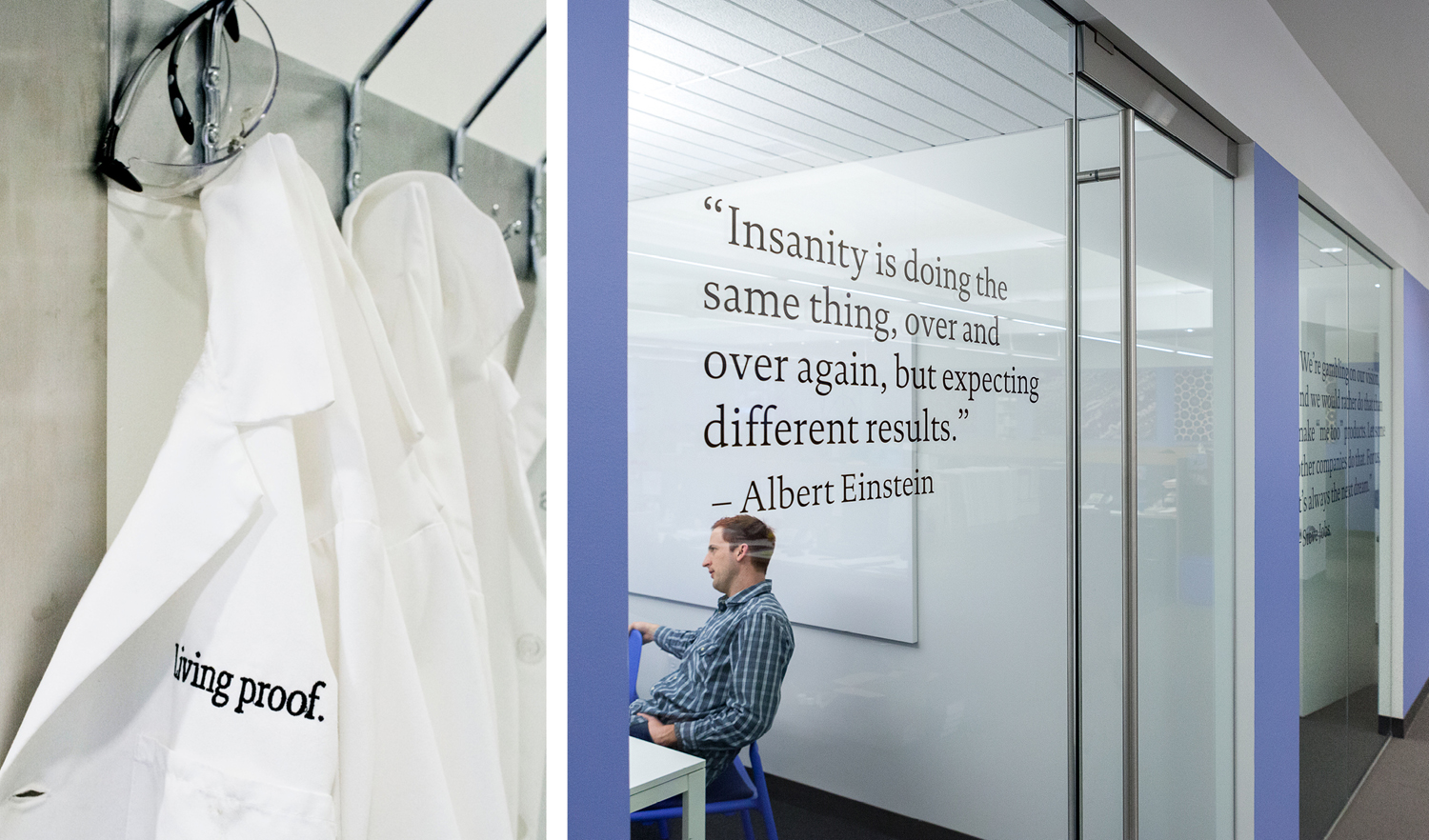
DH: So this is our random question for you. You’re stranded on a desert island. You can only bring one Living Proof product, one food and one website because you’ll have internet…what would those be?
GR: I love these kind of questions. So the product I would bring is Night Cap. I just got back from a trip to Jamaica and your hair gets wrecked under the sun and in the chlorine and the ocean. So I put Night Cap on every night, and when I woke up, my hair was just great. So I would totally bring that with me to the desert island. The food I would eat – and I highly recommend this the next time you go to San Francisco – is the vegan brussel sprouts from Gracias Madras. It’s a vegan restaurant in the Mission district. They do this flash-fried brussel sprout with a cilantro-almond pesto that will knock your socks off, and I’m not even vegan! I’m taking that with me on the island! So for the website, it’s probably going to be Bon Appetit because I love to cook and I’d love to look at this food that I can’t eat while I’m on this island. The second choice would probably be Architectural Digest, but I think I’ll go with Bon Appetit. But what about you?! What would yours be?
DH: Oh gosh. Well, the Living Proof product would definitely be the Full shampoo. I love the Full shampoo. The food that I would take would probably be, those really wafer-thin-crust pizzas. That’s my thing. It could just be margherita style but that would be my food. The websites that I always go to kind of aggravate me…the news…so I would probably benefit from not being exposed to those. I would probably enjoy something like Architizer which is just beautiful images of architecture and design.
GR: I’ll have to add that one to my list!
This is an excerpt from H+ Magazine | Issue #2. Featured image: ©Emily Neumann/Hacin.
